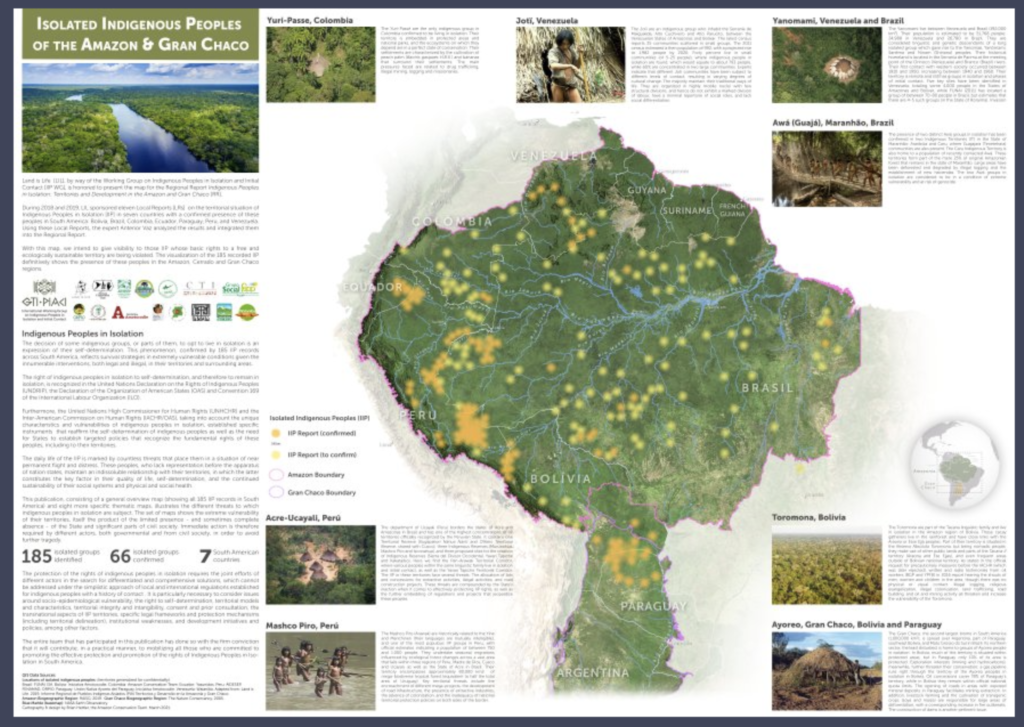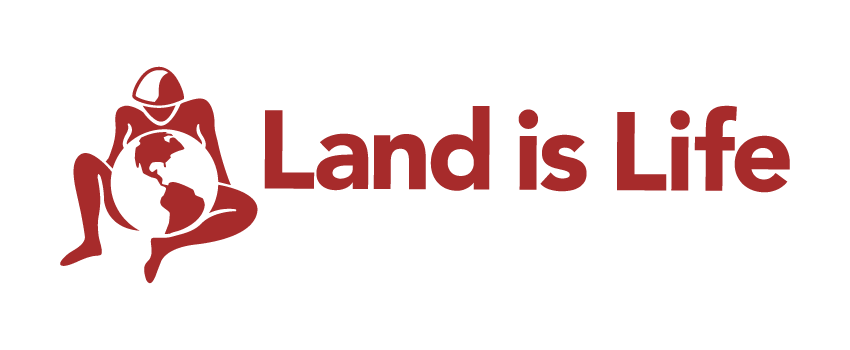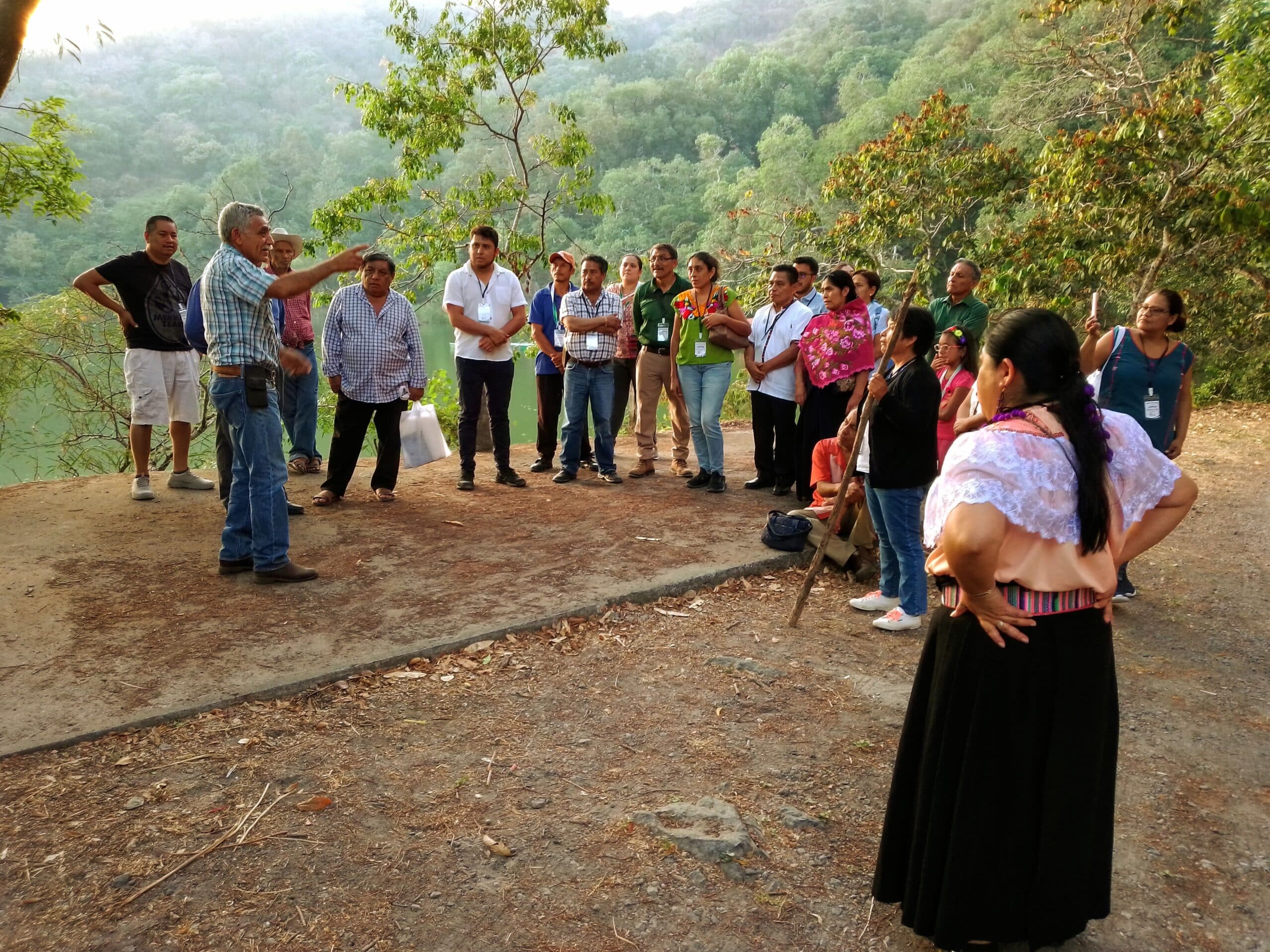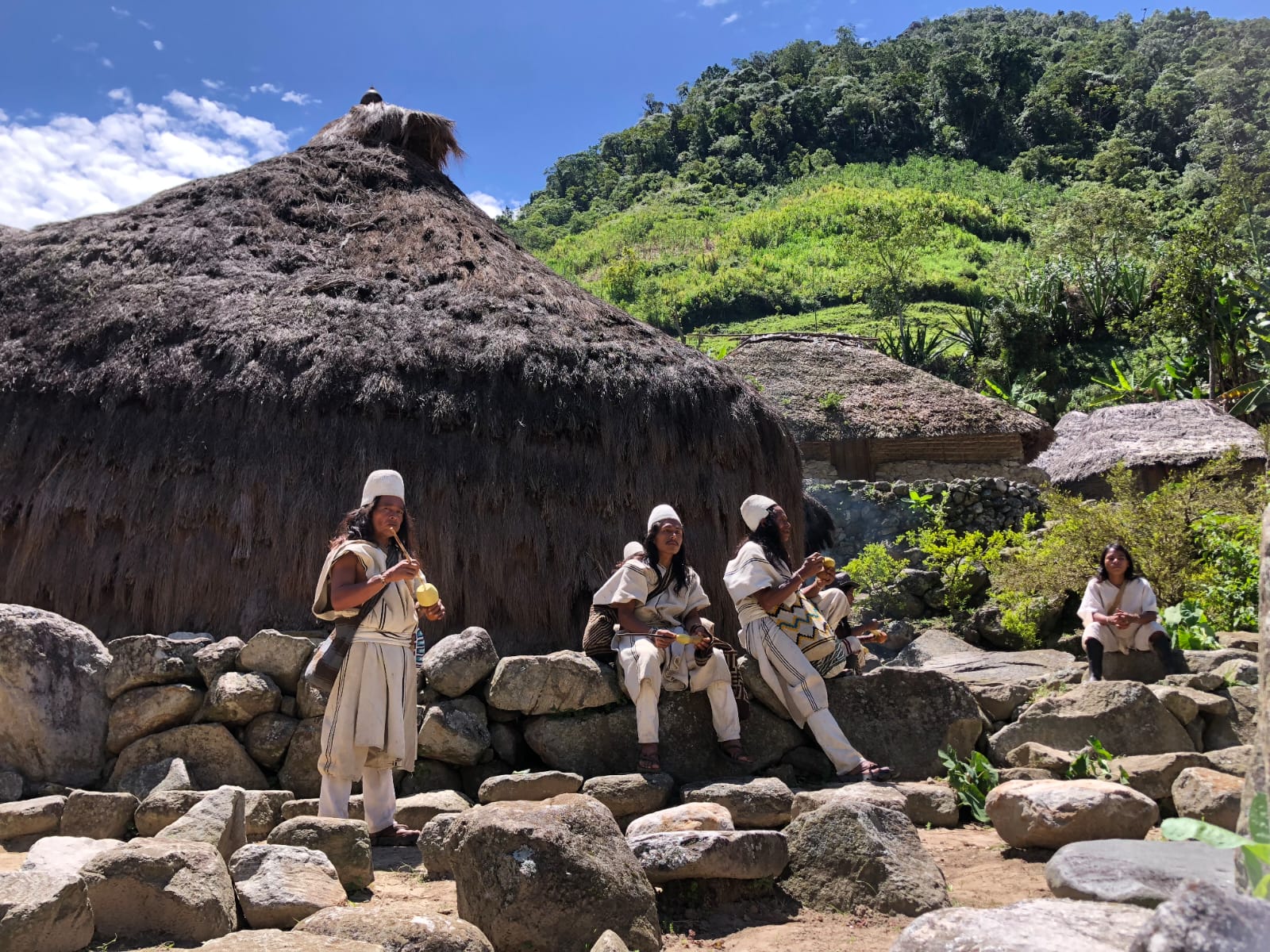
The International Working Group of Indigenous Peoples in Isolation and Initial Contact (GTI PIACI) presented its new Digital Knowledge Center for the protection of 185 Indigenous groups who resist in the Amazon, El Cerrado and Gran Chaco of South America. These communities live in voluntary isolation in various regions within Bolivia, Brazil, Colombia, Ecuador, Perú, Paraguay, Venezuela and Suriname.
With the objective of making visible these peoples and the constant violation of their rights, GTI PIACI created the new website that contains centralized information such as reports, publications, images and videos that portray the current situation of the PIACI. During the launch webinar, the working group shared details of eight regional infographic maps that pinpoint the main threats these communities face constantly.
Various Indigenous leaders and experts from allied and Indigenous organizations discussed the urgency in the protection of the PIACI and suggested various actions.
“It is very important to strengthen our strategies, to create conjoined, binational and trinational efforts in order to protect our peoples and their lives,” stated Julio Cusurichi Palacios, president of Federación Nativa del Río Madre de Dios (FENAMAD) from Perú.
On her behalf, Tina Oliveira Miranda, Program Coordinator for Environment Monitoring, Wataniba Foundation of Venezuela, explained: “The reality of the PIACI is a response to processes of colonization, conflicts, and violence, and, therefore, in the course of their history they adopted isolation as a strategy in order to ensure survival and preserve their autonomy and integrity.”

Eight Main Threats
GTI-PIACI has identified at least eight major threats against Indigenous territories and the PIACI:
- Extractive activities such as mining; hydrocarbons (oil and gas).
- The advancement of the agricultural frontier, with particular emphasis on agribusiness.
- Timber extraction (logging).
- The construction and operation of hydroelectric dams.
- Road building.
- Development of waterways.
- Drug trafficking.
- Activities of fundamentalist missionaries.

Together, these threats have caused an increase in deforestation and wildfires which are destroying increasingly large areas within Indigenous territory and invading PIACI lands.
The most affected areas are Gran Chaco, the Amazon and El Cerrado, home of 61 natural protected areas that are undergoing all kinds of violations.
Each one of the 185 identified communities faces many of these dangers. “Yuri Passé, for example, is the only Indigenous community living in isolation identified in Colombia. The main threats they face are illegal mining and religious missionaries,” said Brian Hettler, a geographer with Amazon Conservation Team (ACT) in Colombia.
“In 2020, we found that among the five most deforested Indigenous lands in the Amazon, there are four Indigenous Groups Living in Voluntary Isolation. Over 24,000 hectares of their lands have been dismantled so far in 2021,” said Angela Kaxuyana, Coordinator of the Coordination of the Indigenous Organizations of the Brazilian Amazon (COIAB).
She also noted, importantly, that many areas are hard to access and, therefore, there is a lack of information. “We do know that there is a lot of hidden devastation,” stated Kaxuyana.

José Gregorio Mirabal, Indigenous leader of the Kurripaco Peoples in Amazonian Venezuela and President of COICA, was the last to speak during the webinar and vehemently pointed out, “invasive and extractive policies are placing in danger of extinction not only the Indigenous Peoples in Voluntary Isolation, but all the peoples of the Amazon.”
Without a doubt, joint efforts among allied and Indigenous organizations, the media, and other actors will help make the objectives of developing strategies and protection systems with a regional, cross-border scope a reality. For this purpose, Mirabal suggested the following actions:
- “One—to press for a global strategy that guarantees the lives of our brothers and sisters and their territories.
- “Two—continue monitoring and demanding the governments of the South American Amazon provide safeguard and legal mechanisms that guarantee life. That the rights we have as Indigenous peoples be respected.
- “Three—strengthen a permanent program of urgent action in the territories that works at a global, territorial level.
- “Four—we must make a strategy of vigilance—of protection against miners, oil diggers, drug traffickers, loggers, religious missions, overall outsiders of the territories.
- “Five—there has to be a national and cross-border strategy. There is an absence of the state, of the government in these territories. But there is a permanent presence of an illegal and criminal economy that is doing a lot of damage.”
Be sure to follow GTI PIACI on social media:



